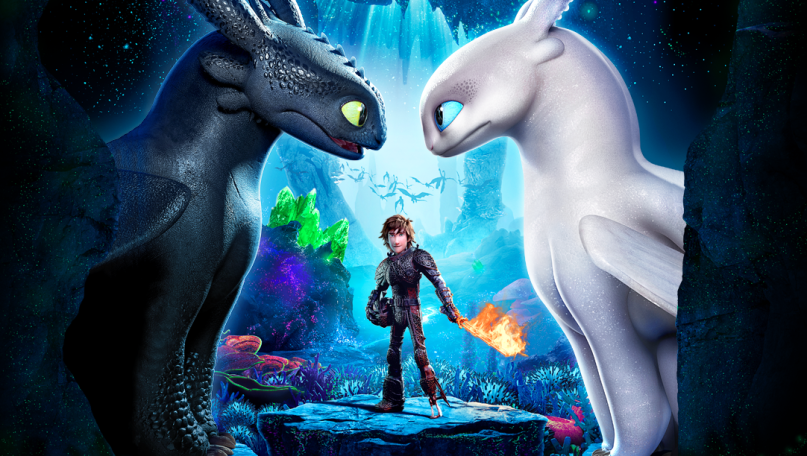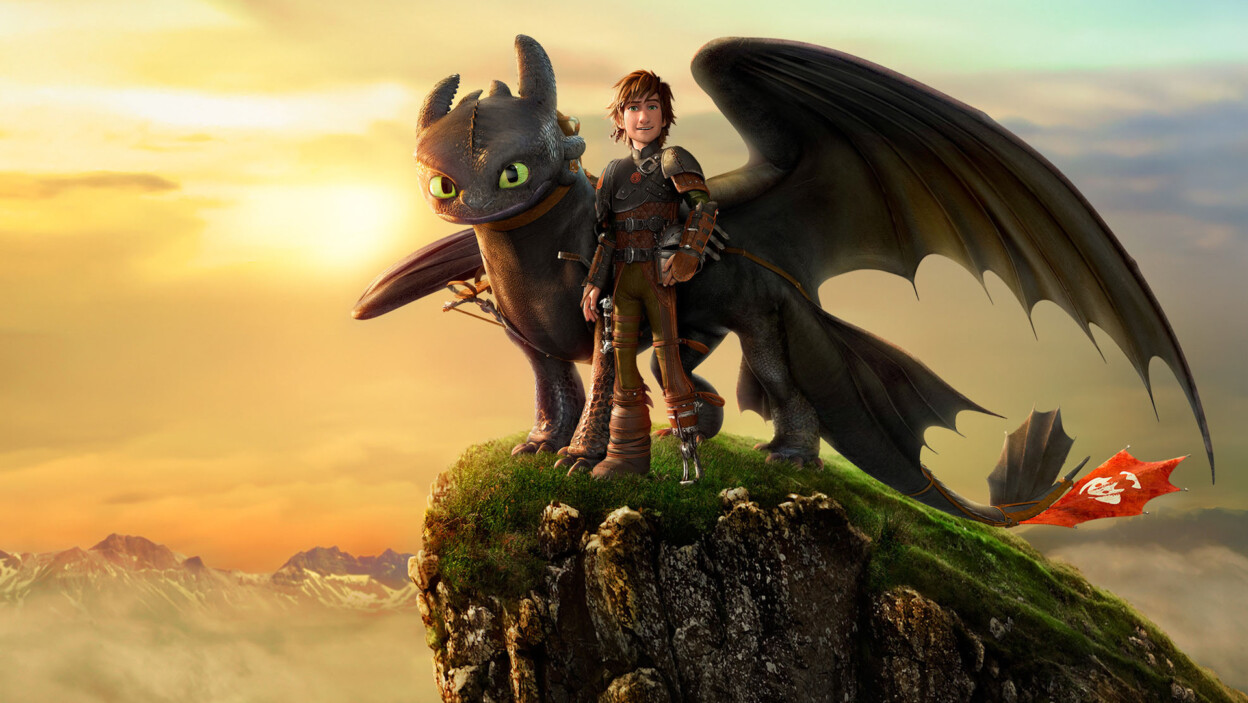Spoilers ahead...
Life without friendship and love has no meaning. Unfortunately for us, the universe has a wicked sense of humour. For when you experience friendship and love, you also have to go through the inevitable and painful loss that comes with it — friendships fade, people break up (not always for “bad” reasons, too) and if all goes well, only death will do you apart. But that in many ways is what makes life beautiful.
And that, more than the large battle sequences and fire breathing dragons, is what How to Train Your Dragon: The Hidden World (or How to Train Your Dragon 3) is about. It is what this entire series has been about / building towards. The first punch to the gut comes somewhere in the middle. Son, with love, comes loss. A stinging line by Stoick to little Hiccup in one of the few flashback sequences in the film. Stoick may have been referring to his wife/Hiccup’s mom, who was assumed dead at the time, but that line forms the central theme of the film. And loss doesn’t just refer to death.
What comes as a pleasant surprise is that despite being the final chapter of the trilogy, How to Train Your Dragon 3 isn’t wrapped in bombast. It isn’t a grandiose war film about the heroes of Berk taking on a ruthless dragon hunter who has two Deathgrippers by his side, with long piercing tasks and acid for saliva — those elements are present, but they’re hardly the highlight nor the point. This is a character-centric film in which the adventure towards a secret dragon utopia doubles as a journey of self-discovery. It reminded me of War For the Planet of the Apes. And for the most part, it works really well.
The first two movies were seen through a familiar lens: the humans. We saw the world as the Berkians did. As Hiccup did. All meaningful character arcs revolved around them. Humans were afraid of dragons. Humans realised dragons aren’t vicious beasts. Humans chose to keep these dragons as pets (they’re friends too, sure, but the same way man and dog are friends in the real world). The humans experienced love and loss (Hiccup growing up without a mother, the cruel death of Hiccup’s father, etc). In How to Train Your Dragon 3, writer-director Dean DeBlois provides a unique perspective. This is as much Toothless’ story as it is Hiccup’s.
Stretches of the film revolve around Toothless and his romantic pursuit of a new dragon — a female Nightfury… a Lightfury as Astrid calls it. Dean DeBlois doesn’t rush through these sequences. He lingers and observes, uninterested to rush to the crowd-pleasing fights. There’s a scene where we see Toothless try to impress Lightfury. He spreads his wings and puffs his chest, like a peacock who fans its colourful iridescent tail feathers when flirting with a peahen. He stumbles around awkwardly. She stares at him blankly, as if to say seriously bruh? On the surface, it’s a cutesy scene, guaranteed to get the kids cracking up. A genuine smile stretched across my face. But there’s also intrinsic character work at play here.

We’re seeing the growth of a character who was once almost killed by a boy. He then developed a friendship with this boy and they became the best of buds. For years, it has remained that way. But now, another dragon has entered the picture, gorgeous, graceful and fearsome. And suddenly he’s experiencing emotions he’s never before. Toothless sees two dragons courting in Berk. Few days ago, he would’ve walked past them, ran to the cliffs and played with Hiccup’s prosthetic leg AKA his favourite chew toy. But now he stops and stares at the dragon pair curiously. He tries to mimic their actions, practising with his shadow that emerges on a large rock, like how we would a mirror.
It’s a crazy little thing called love.
Love is changing Toothless (for the better). DeBlois makes the Nightfury’s handicapped tail-fin a symbol. Once, Toothless didn’t want a new fin that would enable him to fly on his own, preferring instead the one that would require Hiccup to steer ( a symbol of their friendship and synergy — both dragon and boy are one). But now he desires the ability to soar through the white clouds and night skies by himself. To be free and become his own individual. For that is the only way he can pursue Lightfury, who gets agitated at the mere sight of humans. But he’s not changing simply for Lightfury. Well, maybe at first. But Lightfury is making him realise his full potential.
Toothless is destined for greatness. The film’s most rousing moment comes when Astrid and Hiccup discover the Hidden World. It’s beautifully animated, bursting with vibrant and vivid colours that light up like neon signs in the presence of a dragon. The dragons themselves glow. It’s where they belong. Hiccup and Astrid peer from behind some rocks as hundreds and hundreds of dragons bow down to Toothless (and Lightfury) who stands majestically atop a precipice that brings back memories of Pride Rock. “Now that’s a king!” says Astrid. Indeed he is. It’s a hair-raising sequence, but there’s also an underlying sadness to it. It’s the moment where it finally sinks in on Hiccup that he needs to let Toothless go.

The Toothless-Lightfury relationship mirrors Hiccup-Astrid’s. Hiccup loves dragons, period. But he also loves dragons because he feels insignificant without them. Hiccup was a nobody in the pre-Toothless era. Or at least, that’s how he saw himself. He didn’t fit in, in the Dragon slaying muscle flexing world. And then the Nighfury came along and he went from scrawny loser to village Chief.
With Toothless’ imminent farewell, Hiccup crumbles. He questions his ability to lead without his trusty ebony beast by his side. What he needs to realise is that Toothless didn’t make him the man that he is. It’s because he’s the knuckleheaded, strong-minded, compassionate man that he is, that dragons and Vikings live together harmoniously. He opened the eyes of Berkians. He is his own man. And of course it’s his Lightfury; his rock, Astrid who helps him realise that. The Toothless and Lightfury portion plays like a silent film. But the dialogues between the two regal creatures are filled in through the parallel conversations of Hiccup and Astrid. It’s excellent writing.

The problem with the film is that for some odd reason, this time around, Dean DeBlois doesn’t seem to have his finger on the pulse as far as the finer details of fantasy writing go. After the film’s exciting open, Valka (Hiccup’s mom voiced by Cate Blanchett) tells Hiccup and his band of misfits that they’re relying too much on their dragons and not enough on each other. Where’s the corresponding scene where we see the gang, later in the movie, pull off some creative and cool combos without their dragons, and make us leap out of our seats and high five our friends? Instead, we only get a bunch of them gliding from atop a cliff onto some boats.
Or what about Lightfury teaching Toothless how to do what is essentially the dragon version of the Kamehameha in the second act. Where’s the fist-pumping echo in the climax where Toothless explodes in a glorious wide shot? We talk about Hiccup finding his mojo back. Where’s the scene where he breaks down and bares his soul to Astrid ala Rocky in Rocky III? Instead, we only get a diluted version of that, that only last three seconds. In fact, as far as climactic battle sequences go, it’s quite the letdown, severely lacking in dramatic tension, working only because of John Powell’s goosebumps-inducing musical score (his score has been stellar throughout this trilogy).
The villain too is a letdown. One who starts off as a smart, merciless and all-out compelling character and morphs into a plot device like Helmut Zemo in Captain America: Civil War. These are more than nitpicks. They’re qualms I couldn’t get over even after a second viewing. But, a second viewing also made it clear that everything else about Dean DeBlois writing and directing is wonderful. A second viewing made me realise that the climax isn’t the villain’s defeat — the villain is just another asshole; there will be more assholes after this one — rather the scene where Lightfury, who previously was apprehensive about all humans, dives and saves Hiccup from what would’ve been a fatal fall. She realises that not all men are the same. Perhaps the climax is the bittersweet goodbye the Berkians bid their dragons as they soar away towards the Hidden World where they can live in peace away from men like Drago Bludvist and Grimmel the Grisly.
As Stoick says, son, with love, comes loss.







